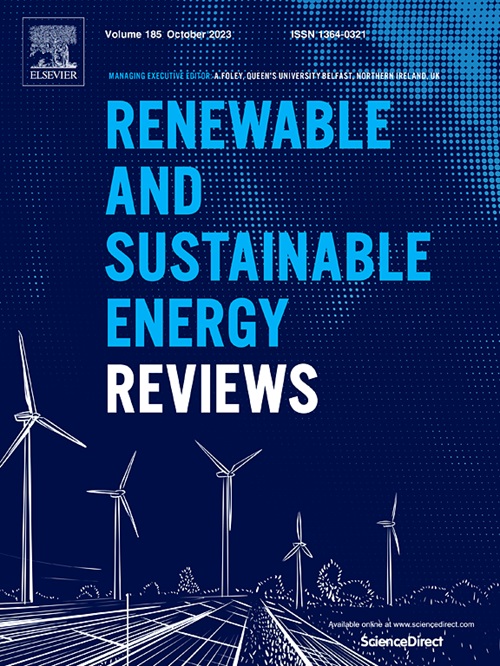低碳技术对公路排放的影响:水泥和钢铁行业
IF 16.3
1区 工程技术
Q1 ENERGY & FUELS
引用次数: 0
摘要
高速公路建设以水泥和钢铁为主,消耗大量的碳密集型材料,其隐含碳排放日益受到关注。公路建设公司迫切需要从供应链上降低气候风险。本研究首先根据温室气体议定书和生命周期评估方法,提出了一种新的方法来评估低碳水泥和低碳钢铁技术对公路建设排放的影响。确定了20种水泥技术和16种钢铁技术组成的314种组合对中国实际高速公路6个子项目碳排放的影响。研究结果表明,水泥与钢铁技术的强结合可减少公路工程总排放量的32.4%,但公路建设碳排放的主要来源没有改变。一方面,这强调了负责任的消费和生产在支持气候行动方面的潜力;另一方面,它表明,为实现深度脱碳,仍需要进一步创新与子项目本身有关的减碳技术。本文章由计算机程序翻译,如有差异,请以英文原文为准。
Low-carbon technologies’ impact on highway emissions: Cement and steel sectors
The implied carbon emissions in highway construction attract increasing concerns due to its large consumption of carbon intensive materials, dominated by cement and steel. There is an urgent need for highway construction companies to reduce the climate risk from the supply chain. This study first proposed a novel method to assess the impact of low-carbon cement and steel technologies on highway construction emissions, in accordance with the Greenhouse Gas Protocol and the Life Cycle Assessment method. The impact of 314 combinations formed by twenty types of cement technologies and sixteen types of steel technologies on carbon emissions from six subprojects of a real highway in China was identified. The findings show that the strong combination of cement and steel technologies can help reduce 32.4 % of total emissions from the highway project, but the main sources of highway construction carbon emissions have not been changed. On one hand, this underscores the potential of responsible consumption and production to support climate action; on the other hand, it indicates that further innovations in carbon reduction technologies related to subprojects themselves are still needed to achieve deep decarbonization.
求助全文
通过发布文献求助,成功后即可免费获取论文全文。
去求助
来源期刊

Renewable and Sustainable Energy Reviews
工程技术-能源与燃料
CiteScore
31.20
自引率
5.70%
发文量
1055
审稿时长
62 days
期刊介绍:
The mission of Renewable and Sustainable Energy Reviews is to disseminate the most compelling and pertinent critical insights in renewable and sustainable energy, fostering collaboration among the research community, private sector, and policy and decision makers. The journal aims to exchange challenges, solutions, innovative concepts, and technologies, contributing to sustainable development, the transition to a low-carbon future, and the attainment of emissions targets outlined by the United Nations Framework Convention on Climate Change.
Renewable and Sustainable Energy Reviews publishes a diverse range of content, including review papers, original research, case studies, and analyses of new technologies, all featuring a substantial review component such as critique, comparison, or analysis. Introducing a distinctive paper type, Expert Insights, the journal presents commissioned mini-reviews authored by field leaders, addressing topics of significant interest. Case studies undergo consideration only if they showcase the work's applicability to other regions or contribute valuable insights to the broader field of renewable and sustainable energy. Notably, a bibliographic or literature review lacking critical analysis is deemed unsuitable for publication.
 求助内容:
求助内容: 应助结果提醒方式:
应助结果提醒方式:


